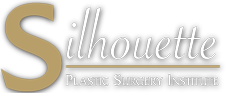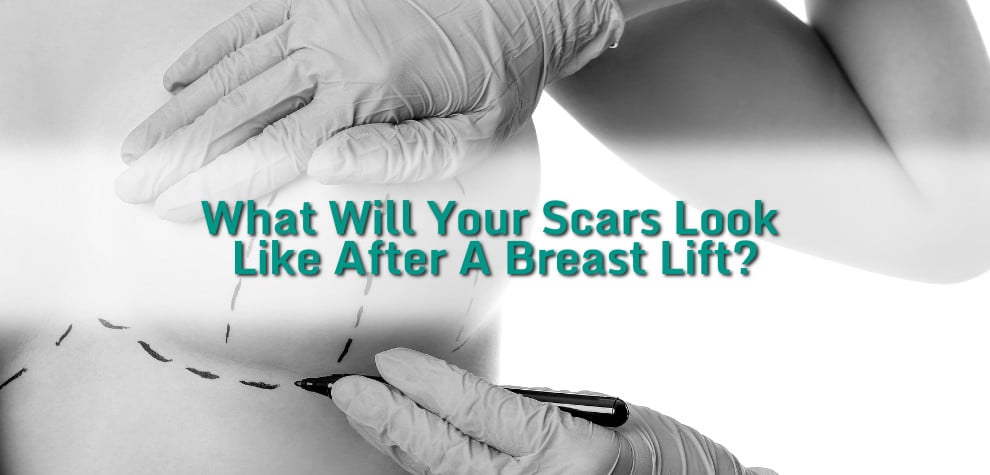Breast lifts are a great way to restore your youthful appearance following pregnancy or weight loss. They can also be very beneficial to women whose breasts tend to hang low on their chest or “sag.” Those who seek breast lifts often come away from the procedure feeling much more confident in themselves and their body. However, one thing that can be scary for a lot of these women is the idea of scarring. As with any type of surgical procedure, scarring will certainly be a factor, but it shouldn’t be something that turns you away from the idea completely.
Fortunately, there are ways to minimize the visibility and length of scars after breast lift. At the Silhouette Plastic Surgery Institute, our Bakersfield plastic surgeon Dr. Hootan Daneshmand possesses the necessary skill to reduce your chance of serious scarring. His ability to provide the latest advances in cosmetic, reconstructive, and plastic surgery combined with his gentle approach ensures that you are in the best hands when it comes to scar minimization. In this blog post, we discuss what breast lift scars look like after surgery, how they form, and how one might avoid them.
How Do Breast Lift Scars Form?
Breast lifts scars occur when a surgeon cuts through a patient’s skin to help form an opening for a saline or silicone implant. The size and shape of the scar depends on the technique the surgeon chooses to use. Believe it or not, there is no singular way to perform a breast lift. In fact, there are actually several different surgeries that fall under the category of a breast lift.
Below, we’ll provide a list of some of the most popular types of breast lift techniques and what you might expect scarring to look like following each procedure.
Anchor Lift
As you’ll find with each of these types of lifts, their name essentially reflects the way the incisions are made and hence, the shape of the scars left behind. For an anchor breast lift (also called an inverted-T) the surgeon will create three incisions. One around the edge of the areola and another reaching vertically downward from the areola. The last curves horizontally underneath the breast in the inframammary crease. This technique is mostly reserved for women with a significant amount of sagging and will result in the most obvious scars.
Crescent Lift
A crescent lift, on the other hand, is best for women with minimal sagging and is often performed along with a breast augmentation. This technique only requires one incision, made along the top edge of the areola. It typically results in the least amount of scarring from a breast lift.
Donut Lift
The donut lift, as you might guess, requires a circular incision. The incision traces along the whole outer edge of the areola, leaving less scarring than an anchor lift but a bit more than a crescent.
Lollipop Lift
The lollipop lift is the most common type of breast lift. Two small incisions are made: one around the areola and the other going vertically downward to the inframammary crease. The resulting scar tends to resemble a lollipop in shape.
Horizontal Mastopexy
A horizontal mastopexy only entails horizontal incisions. The idea is to reduce the appearance of breast lift scars around the areola.
Dr. Daneshmand will determine what surgical technique is the best fit for you during your initial consultation. During the consultation, he will inspect your breasts, deliver his findings and opinion, and discuss any of your concerns regarding the procedure. To schedule your consultation for a breast lift in Orange County, Bakersfield, or Newport, call Dr. D today.
How to Avoid Breast Lift Scars
Anyone who has undergone surgery before is aware that scarring is, for the most part, inevitable. However, there are a number of different measures someone might take to reduce the appearance of scars. The first and most important thing to remember is to take proper care of your incision sites post-op. The biggest contributor to scarring is poor wound healing.
To help your incisions heal properly, be sure to clean them often and change the bandage or gauze regularly. Your doctor will provide you with specific aftercare instructions regarding how often this should be done. Keeping micropore tape on the incisions for at least 6 weeks following the surgery is also a very important part of the healing process. You should try to change this tape out weekly.
It is also helpful to keep the areas around the incisions moist. Using a healing ointment should do the trick. If the skin does grow dry and a scab forms, do not peel the scab away.
Even if you take all of these precautions to reduce potential scarring and help the healing process, you should still consistently watch for signs of infection. If you notice any symptoms that may indicate an infection, call your doctor immediately.
What to Put on Scars After Breast Lift
Using a silicone-based product—whether it be a gel, sheet, or cream—may be incredibly beneficial in the reduction of scars. This treatment helps reduce the appearance of discolored and raised scars, also known as hypertrophic or keloid scars. The moisture provided by the silicone can help in preventing itchiness, overdrying, pain, and the development of excess scar tissue.
For oils or creams, rub the product over the healed scar multiple times a day, working it into the skin over a period of five to ten minutes. For silicone sheets, apply each adhesive sheet over the scar and leave on for as long as the product’s instructions (or your doctor) suggests.
How to Massage Breast Lift Scars
Physically massaging breast lift scars also proves to be an effective way to minimize and reduce scarring. This method won’t change the color of the scar, but rather the texture, as it can help flatten and even soften out the scar. Once the incision site heals, use a moisturizing or silicone cream to rub the scars in alternating circular, horizontal, and vertical motions. You’ll want to press firmly, applying a bit of pressure to the site.
Repeat this massage technique several times a day (the more often, the better) for about ten minutes each time. Continue for six months or longer, depending on the results.
When Do Scars Fade From Breast Lift?
Breast lift incisions vary in the amount of time they take to heal, largely due to genetics. Some people may recover rather quickly, while for others, it may take a considerable length of time following their operation. By six weeks post-op, redness and lumpiness should diminish across most areas across your breasts.
After that, the incision site will start developing into firm, healing ridges. This can take another six months or even up to a couple years before it heals entirely, depending on the patient’s skin color. Individuals with either a very light or very dark skin tone might not see complete healing until up to two years post surgery. By the time the scars reveal their final color, they may either appear darker, lighter, or potentially the same color as the surrounding skin tone.
How to Have Breast Lift Without Scars
There is no sure-fire way to undergo a breast lift procedure without developing scars afterward. However, with the preventative measures we just mentioned, you can significantly decrease your risk of permanent scarring.
Another way to lessen the chance of serious scarring after a breast lift is to seek out someone who is appropriately qualified to perform cosmetic surgery. Specifically, someone who is a board-certified plastic surgeon with experience in breast and other plastic surgery procedures in California. A board-certified plastic surgeon is one who possesses a certification from the American Board of Plastic Surgery. To meet these standards, a surgeon must:
- Have at least five years of surgical training and a minimum of two years of plastic surgery training.
- Have training and experience in all plastic surgery procedures. This includes breast, body, face, and reconstruction.
- Be peer-reviewed for safety and ethical standards prior to attaining the honor of active membership.
- Operates only in accredited facilities.
Contact Dr. D at the Silhouette Plastic Surgery Institute Today!
Dr. Daneshmand is an accredited board-certified plastic surgeon with several years of experience and numerous successful breast lift procedures under his belt. He understands his patients’ apprehension towards scars and will do everything in his power to reduce the chance of scarring after a breast lift. If you have any further questions or concerns about scars after breast lift, contact our California plastic surgery institute today. Our Silhouette offices offer locations in Orange County, Bakersfield, and Newport Beach. To set up your consultation, give us a call at (949) 359-8397 or complete the online request form available on our website.

